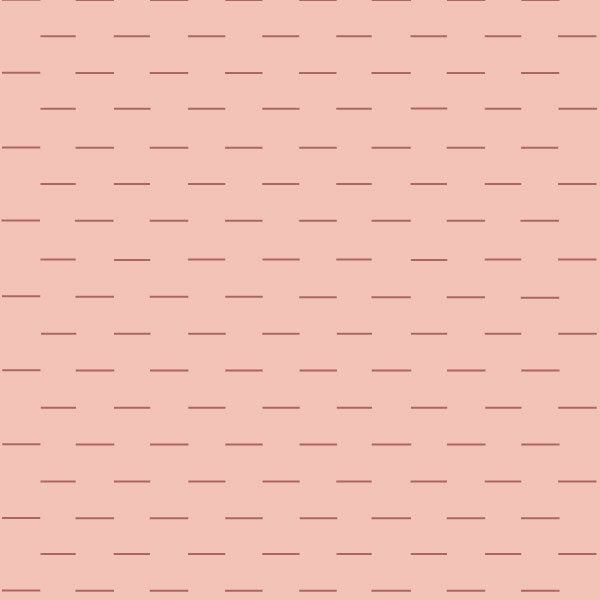According to Atsushi of Upcycle Stitches, Sashiko's is “stitching with purpose of mending, strengthening, warmth and decorating the fabric.”
Dating back hundreds of years, Sashiko was developed in rural communities of Japan as a way to mend clothing. The Sashiko process started as a necessity. Many rural families lived in poverty and far from urban populations. Access to new fabric was limited. When clothing ripped, rather than make something new, women would repair the garment that was damaged using Sashiko. The process largely took place in the winter months as during the summer, both men and women worked as farmers. In today’s culture, Sashiko is known as an art form and a fun/decorative practice to repair clothing.
* This article was reviewed and approved by Atsushi Futatsuya. Some quotes come from our email exchange with him.
Traditions of Sashiko
While Sashiko does have traditions and techniques (explored below), Atsushi portrays Sashiko as a “process, not a result”. He mentions that “it is not productive to discuss what is Sashiko and what is NOT Sashiko based on the patterns and stitching techniques.” Instead, he provides a list of elements that beautifully portrays his experience with Sashiko. Atsushi also wanted to note that these are his personal preferences.
- Hand-Stitched
- Appreciation to the fabric
- Concept of Mottainai – too good to waste
- The main purpose is repairing and/or decorating the fabric
- Repetition of mending, repairing and using the fabric
* Atsushi does acknowledge that Sashiko can be done by machine sewing however, he personally does not prefer it.
Learn the practice
Now that we know a little bit about Sashiko, let’s practice the sashiko techniques by repairing a pair of jeans with a hole in them. But first, the tools.

Step One | Pick A Pattern
The first step is easy: pick a pattern that you want to work with! Below are a few designs that we like for clothing repair. If you want to print them, simply click on the image and a downloadable pdf will appear. You can also do some surfing on the web or draw your own! Click here for some inspo!
Step Two | Place It + Pin It
Let’s put the fabric/patch in place.
- Measure the hole in your garment and cut a piece of fabric/patch that is about one inch larger than the hole on all sides.
- Place the cut fabric underneath the garment so that it covers the hole and allows one inch of room on all sides.
- Go ahead and pin the fabric in place.

Step Three | Draw It or Go For It
Using your pattern as a template, draw it on the garment! You can also use tracing paper.
Side Note: If drawing on any fabric, make sure to use a water soluble fabric pen or chalk. You can find them at most craft stores.
Lastly, if you want to free hand the design and just stitch the pattern as you go, go for it! Drawing is not necessary.
Pro Tip: For complex patterns, building a grid might be helpful.
Step Four | Sewing Process + Techniques

At this point we have a pattern on the garment and we are ready to stitch. Before we go further, let’s talk about some Sashiko techniques and traditions.
Techniques:
A key difference between western embroidery and Sashiko is the stitching technique. For western embroidery, most people use a “one stitch at a time” technique. It involves pushing through the thread on every pass as shown below.
With Sashiko, you “load” stitches on the needle. Many people say that it resembles a pleat. Images below. Once you load several stitches on the needle, you then pull it through. This provides more evenly spaced lines which are important in Sashiko as explained further below. The key to success with this technique is to use a large sashiko needle and be conscious about your spacing.

Traditions:
As mentioned in the intro, Sashiko does not appear to have any specific rules which makes the process inventive and fun for the artist. However, when it comes to the line spacing, Sashiko artists have clear norms. Most prefer evenly spaced lines with no overlapping intersections. Images below. Besides that, the amount of spacing and length of stitching is up to the artist!
Traditionally Sashiko was only used with indigo dyed fabrics and white thread to repair clothing. Atsushi clarifies this on his website, he mentions that this is not a rule but rather an understanding of the tradition.
“You can do Sashiko on any kind of fabric with any color. However, there are efficient and beautiful ways to do stitching based on its history and accumulated wisdom.”
Pro Tip: Sashiko is practiced with a Sashiko thimble which is extremely helpful (if not necessary) in the stitching process.
Step Five | Enjoy
Those are the basics! We find beauty in the Sashiko process as it’a a way to mend our own clothes and give new life to them in a fun/artistic way. It’s about repairing our clothes while re-living the memories of our adventures in them and at the same time, getting our garments ready to create new memories! Have fun, play with different patterns and please explore more about the practice of Sashiko and its history!
Other Useful Links:
https://www.youtube.com/c/sashico
https://www.instagram.com/sashi.co/
https://upcyclestitches.com/Sashiko/
https://upcyclestitches.com/basic-sashiko-denim-mending/
https://upcyclestitches.com/store-d/Sashiko-Workshop-Registration-c25122055





